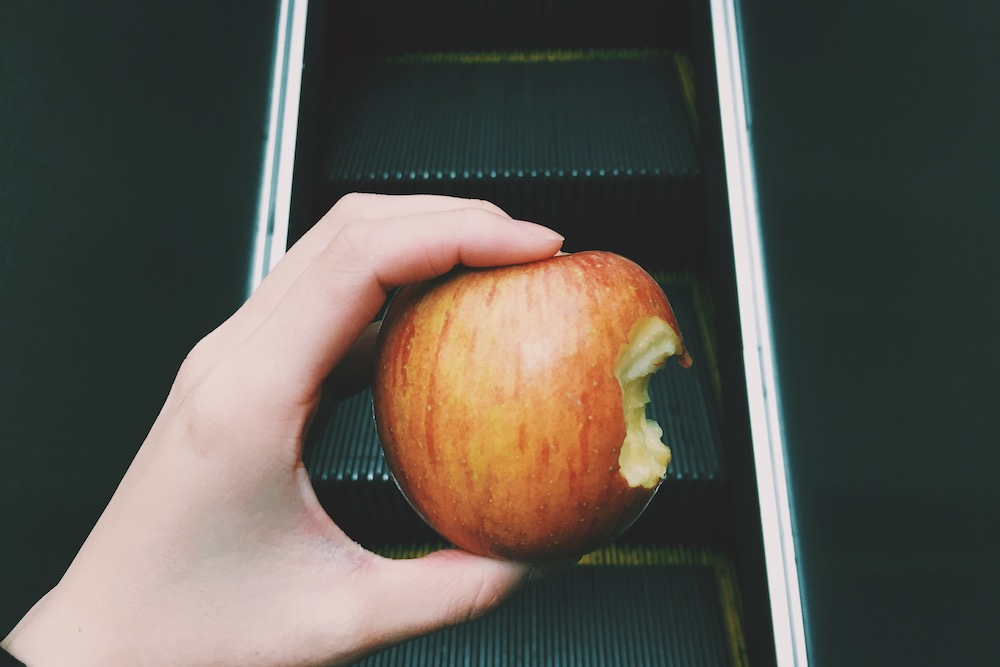4 Steps For Transitioning Off A Low Residue Diet

Colon Cancer Awareness Month Part 4 - Trish Massart
A low residue diet is typically prescribed following bowel surgery as a means to “rest” the bowel and allow for recovery. Low residue foods are foods that contain next-to- no fiber, as the fiber can obstruct and/or irritate the intestinal tract. However, this diet is also lacking in nutrition, which is why it is meant to be only temporary. So, how do you transition off of the low residue diet safely? Internal scarring and/or an altered physiology can make re-introducing foods into your diet risky. Careful planning and close monitoring is the safest approach. Here are my four easy steps:
Step 1: Always get your surgeon’s go-ahead.
Step 2: Write out your transition plan and make yourself a chart so that you can record your body’s reactions. You can find a ready-to-go chart on my blog: trish2dot0.com. You’ll want to be strategic and start with the foods with the lowest fiber content and therefore the least likely to cause trouble.
Here are some simple tips:
1. Mix mashed potatoes with 50% white, 50% sweet. You can even add steamed carrots (or any other vegetable you like, mashed of course). The goal is to transition to 100% away from white potatoes (if that is your desire). If you are having success and feel well, try including a small portion of potato skin. The skins are packed with nutrition, but also fiber, so proceed with care.
2. Steamed veggies can go from mushy to al dante. Start experimenting with more fibrous veggies like artichokes, beets, snow peas and green beans. And practice variety. A blend of vegetables means a better chance of complete nutrition.
3. Swap store-brand white bread for store brand brown bread and then eventually bakery-fresh multigrain. Perhaps try baking your own breads. Start with smaller portions to test your GI tract first.
4. Experiment with smoothies. Add sautéed and shredded kale or spinach, along with easy-to-digest bananas. When you feel ready, add blueberries and strawberries, etc. Skins and seeds can cause problems, so filter out the seeds if you can.
5. Add fresh pressed juices your diet. They are packed with vitamins and minerals.
6. Stop peeling your apples/pears (if you wish), one quarter at a time. Record the portion and the reaction and adjust as needed.
7. When reintroducing something “high risk” eat it on its own, in a very small portion. Record it.
8. If you do have a bad food experience, rest your GI for 3 or 4 days before attempting another test.
Step 3: Take small mouthfuls and thoroughly chew before swallowing. It can make all the difference to healthy digestion. In the case of certain meats and nuts, these foods can be especially tricky to reintegrate. You may find some foods are permanently off-limits. For me, it was lamb. My first and only attempt to eat lamb landed me in the ER.  So, when reintroducing something like steak or pork chop, start with a very small portion, like 1 oz, and eat it away from other foods. Wait several hours before you consume anything else. Make note of how you feel. No problems? Then try again another day with a slightly bigger portion. Remember, a 3 oz serving of meat IS a healthy portion—8 oz, 12 oz and definitely 24 oz is just not good for your GI tract, regardless of your state of health. The same strategy applies with nuts. You may find that you are forever unable to consume nuts and seeds. They are definitely not recommended for patients with Crohn’s, Colitis or Diverticulitis as they can cause injury to the delicate tissue of the intestinal wall. If you have any concerns whatsoever, check in with your surgeon and/or your nutritionist.
So, when reintroducing something like steak or pork chop, start with a very small portion, like 1 oz, and eat it away from other foods. Wait several hours before you consume anything else. Make note of how you feel. No problems? Then try again another day with a slightly bigger portion. Remember, a 3 oz serving of meat IS a healthy portion—8 oz, 12 oz and definitely 24 oz is just not good for your GI tract, regardless of your state of health. The same strategy applies with nuts. You may find that you are forever unable to consume nuts and seeds. They are definitely not recommended for patients with Crohn’s, Colitis or Diverticulitis as they can cause injury to the delicate tissue of the intestinal wall. If you have any concerns whatsoever, check in with your surgeon and/or your nutritionist.
Step 4: Learn to recognize the symptoms of bowel obstruction. The main reason for recording the details of your food intake during this transition phase is so that you can identify problem foods. If you do not know when you are in trouble, this process will never work. Everyone is different and your symptoms may well be different than mine, but typically obstruction is signaled by a feeling of fullness, bloating, pain, fever, and if you have an ostomy a decided lack of BMs. If you have severe pain, fever or frankly any concerns related to blockage, get yourself to the ER right away.
Finally, stress and the injured GI are not a good mix.  In times of stress the body naturally diverts blood supply away from non-essential body systems—the GI tract chief among these. Today, we live in a constant state of chronic stress, so removing stress is not necessary an option. However, learning techniques to better manage the stress in your life is quite easily done. And like so much in life, the techniques you find that work for you are unique to you. Many find that exercise, meditation, talk therapy, volunteering, working with animals, etc. are helpful. The key is to recognize that stress impacts your overall health and your GI health in particular and proactively doing something to resolve those effects.
In times of stress the body naturally diverts blood supply away from non-essential body systems—the GI tract chief among these. Today, we live in a constant state of chronic stress, so removing stress is not necessary an option. However, learning techniques to better manage the stress in your life is quite easily done. And like so much in life, the techniques you find that work for you are unique to you. Many find that exercise, meditation, talk therapy, volunteering, working with animals, etc. are helpful. The key is to recognize that stress impacts your overall health and your GI health in particular and proactively doing something to resolve those effects.
When it comes to moving away from the low residue diet, your safest strategy is to seek the advice of a licensed nutritionist or dietitian who has experience and training specific to meeting the needs of Ostomates.
See you next week!
Trish

Trish is a graduate of the Canadian School of Natural Nutrition and a Personal Trainer. In 2012, she was diagnosed with stage-4 colon cancer and after six months of chemotherapy, underwent several lifesaving surgeries. Today, Trish draws from her experience and education to empower others to survive and thrive. She writes for Your Health and Fitness Matters Magazine and she is the principle consultant for In The Bag Nutrition, which is dedicated to helping patients with ostomies, or resected GI tracts, to eat healthfully, exercise safely and to embrace life fully.
